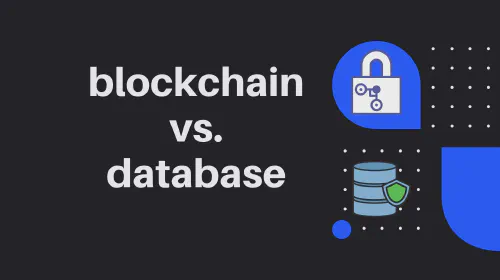Digital Payments: Opportunities and Threats - Benefits, Risks, Security, Future Trends
Salomon Kisters
Jun 13, 2023This post may contain affiliate links. If you use these links to buy something we may earn a commission. Thanks!
The world is rapidly moving towards a cashless economy, with digital payment platforms taking center stage. While there are numerous benefits associated with digital payments such as convenience, security, speed, and ease of use, there are also several risks and threats that come with this shift.
News headlines are frequently rife with reports of cyber-attacks, data breaches, and identity theft, all of which can be linked to digital payment systems. Additionally, there are concerns about the potential for financial exclusion of individuals who lack access to these platforms, as well as the potential for discrimination and reduced privacy.
Despite the risks, digital payments continue to grow at an unprecedented rate, with many countries adopting or planning to adopt digital payment systems as their primary method of payment. In this blog post, we will explore the opportunities and threats that come with digital payments to help you understand the challenges and benefits that come with this global shift towards a cashless economy.
The Rise of Digital Payments
Over the past few years, digital payments have witnessed a surge in popularity across the world. With the emergence of new technologies and the proliferation of smartphones and the internet, more and more people are switching from physical cash to digital payments.
In fact, according to a recent report by Statista, the global transaction value of digital payments is expected to reach nearly $9 trillion in 2024, up from $4.1 trillion in 2019. This growth is being driven by the convenience, security, and speed that digital payment platforms offer.
From mobile wallets to online payment gateways, there are multiple options available for making digital transactions. These platforms allow users to make payments and transfer money from anywhere, at any time, without the need for physical cash or cards.
Moreover, digital payments are revolutionizing the way businesses operate. With digital payment systems offering lower transaction costs and faster settlement times than traditional payment methods, businesses can streamline their financial processes and improve their bottom line.
Opportunities for Businesses and Consumers
Digital payments offer a range of opportunities for both businesses and consumers. For businesses, digital payment systems can streamline their financial operations and reduce transaction costs. With digital payments, there’s no longer a need for physical cash or checks, which can be easily lost or stolen. Digital payment platforms also provide faster settlement times, eliminating the need for manual reconciliation and reducing the risk of errors.
Digital payments also open up new markets for businesses. With digital payment platforms, businesses can reach customers who may not have access to traditional banking services, allowing them to expand their customer base and increase sales. Digital payments also offer a way for businesses to offer flexible payment options, such as payment plans or recurring payments, which can improve customer loyalty and retention.
For consumers, digital payments offer convenience and security. With digital payment platforms, consumers can make purchases and transfer money from anywhere, at any time, without the need for physical cash or cards. This can be especially important for individuals who travel frequently or live in areas without traditional banking services.
Digital payments also offer increased security compared to physical cash. With digital payment platforms, all transactions are encrypted and monitored for fraudulent activity. This provides consumers with peace of mind knowing that their financial information is protected.
In addition, digital payments offer greater transparency and control over their finances. With digital payment platforms, consumers can easily track their expenses, set up automatic payments, and receive real-time notifications of their account activity.
Threats to Traditional Payment Methods
While digital payments offer a host of benefits, they also pose a threat to traditional payment methods like cash and checks. One of the biggest threats is the potential for fraud and security breaches. Cybercriminals continue to target digital payment systems, exploiting weaknesses in security protocols and stealing sensitive financial information. This can lead to significant financial losses for both businesses and consumers.
Another threat posed by digital payments is the potential for a digital divide. While many people in developed countries have embraced digital payments, there are still millions of people around the world who lack access to the infrastructure needed to make digital payments. This can limit their ability to participate in the global economy and conduct business online.
Furthermore, digital payments can also lead to a loss of privacy. With every digital transaction, data is collected and stored by payment processors, creating a record of an individual’s financial activity. While this data is typically protected by privacy policies, it can still be vulnerable to data breaches or misuse.
Lastly, the growth of digital payments can also have unintended consequences for the broader economy. For example, the increased use of digital payments can lead to the consolidation of power within a few large payment platforms, potentially reducing competition and innovation in the market.
It is important to acknowledge these threats and work to mitigate them as we continue to move towards a digital payments world.
Security Risks and Fraud Prevention
Digital payments provide a fast, convenient, and secure way to make transactions, but they are not immune to fraud and security risks. Cybercriminals are constantly developing new and sophisticated techniques to compromise payment systems and steal sensitive information.
One significant security risk is fake or fraudulent websites designed to mimic legitimate payment pages. Unsuspecting users can easily fall victim to these scams, resulting in the loss of personal and financial information. To prevent this, users should always double-check the authenticity of the website and use secure payment gateways that encrypt and protect data during transactions.
Another common security risk is the use of stolen payment card information to make unauthorized purchases. Payment processors must implement strict authentication measures, such as two-factor authentication and real-time fraud detection, to prevent such fraudulent activities. Additionally, users must be vigilant about reporting stolen or lost payment cards to their bank or financial institution immediately.
To effectively prevent fraud and mitigate security risks, businesses and payment processors should regularly update their security protocols and invest in advanced fraud detection and prevention technologies. Furthermore, educating consumers and employees about the risks and best practices for secure digital payments can go a long way in reducing the likelihood of successful attacks.
The Future of Digital Payments
As digital payments continue to gain widespread acceptance and adoption, the future looks promising for this rapidly evolving industry. One major trend is the growing popularity of mobile payments, fueled by the increasing use of mobile devices and the convenience factor they offer. Mobile payment solutions like Apple Pay, Samsung Pay, and Google Wallet have already made significant inroads in the market and are expected to gain wider acceptance in the coming years.
Another key trend is the rise of cryptocurrencies like Bitcoin and Ethereum. These decentralized digital currencies provide an alternative to traditional payment methods by allowing users to make transactions directly without the need for intermediaries like banks or payment processors. While their adoption is still relatively low, ongoing developments in blockchain technology and increasing mainstream acceptance are expected to drive their growth in the future.
Moreover, advances in artificial intelligence and machine learning are likely to revolutionize fraud detection and prevention in digital payments. These technologies can analyze vast amounts of transactional data in real time, identifying unusual patterns and anomalies that may indicate fraudulent activity. Additionally, biometric authentication methods like fingerprint and facial recognition are expected to provide a new layer of security to digital payments.
Finally, the growth of e-commerce and digital marketplaces is likely to spur further innovation in digital payments, as businesses look for ways to streamline their payment processes and enhance the customer experience. For instance, the emergence of subscription-based business models and on-demand services is expected to drive the adoption of recurring billing and flexible payment options.
All in all, the future of digital payments is bright, as new technologies and evolving consumer preferences create new opportunities for businesses and consumers alike. As the digital payments landscape continues to evolve, staying on top of these trends will be critical for businesses looking to remain competitive in this dynamic and rapidly changing industry.
Stay informed with the latest insights in Crypto, Blockchain, and Cyber-Security! Subscribe to our newsletter now to receive exclusive updates, expert analyses, and current developments directly to your inbox. Don't miss the opportunity to expand your knowledge and stay up-to-date.
Love what you're reading? Subscribe for top stories in Crypto, Blockchain, and Cyber-Security. Stay informed with exclusive updates.
Please note that the Content may have been generated with the Help of AI. The editorial content of OriginStamp AG does not constitute a recommendation for investment or purchase advice. In principle, an investment can also lead to a total loss. Therefore, please seek advice before making an investment decision.

Top Reasons Why Your Bitcoin Transaction is Still Unconfirmed
If you've ever transferred cryptocurrency, then you probably have experienced a delay in the confirmation of your transactions. Why is that, and what can you do?

Blockchain vs Database: Key Differences Explained
Understand the key differences between Blockchain and Database, from decentralization to security, in this detailed comparison.

How Do Blockchain Transactions Work?
Learn more about the many integral steps that a blockchain transaction goes through before it can be included on the blockchain.
Protect your documents
Your gateway to unforgeable data. Imprint the authenticity of your information with our blockchain timestamp